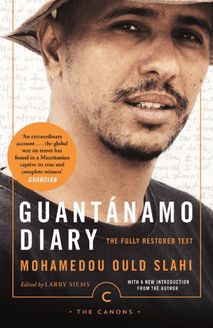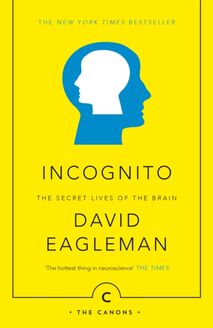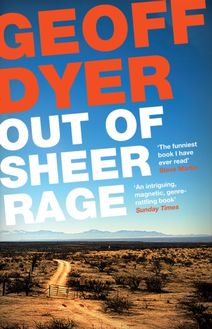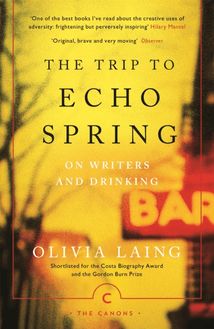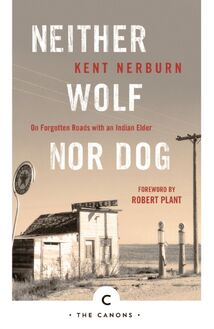-
 Univers
Univers
-
 Ebooks
Ebooks
-
 Livres audio
Livres audio
-
 Presse
Presse
-
 Podcasts
Podcasts
-
 BD
BD
-
 Documents
Documents
-
- Cours
- Révisions
- Ressources pédagogiques
- Sciences de l’éducation
- Manuels scolaires
- Langues
- Travaux de classe
- Annales de BEP
- Etudes supérieures
- Maternelle et primaire
- Fiches de lecture
- Orientation scolaire
- Méthodologie
- Corrigés de devoir
- Annales d’examens et concours
- Annales du bac
- Annales du brevet
- Rapports de stage
La lecture à portée de main
Vous pourrez modifier la taille du texte de cet ouvrage
Découvre YouScribe en t'inscrivant gratuitement
Je m'inscrisDécouvre YouScribe en t'inscrivant gratuitement
Je m'inscrisEn savoir plus
Vous pourrez modifier la taille du texte de cet ouvrage
En savoir plus

Description
Sujets
Informations
| Publié par | Canongate Books |
| Date de parution | 15 octobre 1998 |
| Nombre de lectures | 0 |
| EAN13 | 9781847676160 |
| Langue | English |
Informations légales : prix de location à la page 0,0440€. Cette information est donnée uniquement à titre indicatif conformément à la législation en vigueur.
Extrait
Charles Mingus was born in Arizona in 1922. He settled in New York in the 1950s, where he played and recorded with the leading musicians of his time, such as Charlie Parker, Miles Davis, Bud Powell, Art Tatum and Duke Ellington. Mingus toured extensively throughout the world, including Europe, Japan, Canada, South America and the United States. He died in 1979. Both New York City and Washington, D.C., honoured him posthumously with a ‘Charles Mingus Day’.
Copyright
First published in the United States of America by Alfred A. Knopf, Inc., 1971
This canons edition published in Great Britain in 2019 by Canongate Books First published in Great Britain in 1995 by Canongate Books Ltd, 14 High Street, Edinburgh EH1 1TE
This digital edition first published in 2009 by Canongate Books
Copyright © Charles Mingus and Nel King, 1971 Introduction copyright © Richard Williams, 1995 All rights reserved
British Library Cataloguing-in-Publication Data A catalogue record for this book is available on request from the British Library
ISBN 978 1 78211 882 4 eISBN 978 1 84767 616 0
canongate.co.uk
Contents
Title Page Introduction Chapter One Chapter Two Chapter Three Chapter Four Chapter Five Chapter Six Chapter Seven Chapter Eight Chapter Nine Chapter Ten Chapter Eleven Chapter Twelve Chapter Thirteen Chapter Fourteen Chapter Fifteen Chapter Sixteen Chapter Seventeen Chapter Eighteen Chapter Nineteen Chapter Twenty Chapter Twenty-One Chapter Twenty-Two Chapter Twenty-Three Chapter Twenty-Four Chapter Twenty-Five Chapter Twenty-Six Chapter Twenty-Seven Chapter Twenty-Eight Chapter Twenty-Nine Chapter Thirty Chapter Thirty-One Chapter Thirty-Two Chapter Thirty-Three Chapter Thirty-Four Chapter Thirty-Five Chapter Thirty-Six Chapter Thirty-Seven Chapter Thirty-Eight Chapter Thirty-Nine Acknowledgements Copyright
INTRODUCTION by Richard Williams
Never was there music in which violence and tenderness were so thoroughly entwined as that of Charles Mingus, the bassist, composer and bandleader who is one of the towering figures of American twentieth century music. In other words, never did music speak more directly or reflect more accurately the complexities and contradictions of mankind.
To a generation growing up nourished by the philosophy of the Beats in the late Fifties and early Sixties, there were three musical heroes: the three ‘M’s – Miles, Monk and Mingus. A triumvirate of unbiddable geniuses whose modern jazz seemed to propose nothing less than a new way of life, each of them invested his work with such a powerful character that it endures in a dilute form in the work of countless trumpeters, pianists, bass-players and composers today. But inevitably, jazz being what it is, their music as a living, evolving form died with them. You can play the trumpet like Miles Davis, you can pick out one of Monk’s oblique-angle melodies on the piano, and you can get a bunch of horns to play one of Mingus’s ardent, lyrical, many-voiced themes; but it will not bring them back to life.
Of the three, Charles Mingus is perhaps the least known to today’s listeners, probably because his career was as disjointed and incoherent as his music was consistent in its ability to portray the chaos of the world, with all its cruelty and beauty. Where the introverted Monk let the world come to him and the sophisticated Davis played on its weaknesses and vanities, the truculent Mingus fought every battle head-on, heedless of circumspection or even self-defence. And, since jazz was then still supposed to be a part of the entertainment industry, his intransigence proved abhorrent to the moguls who wrote the cheques.
Yet the passing years strengthen his position among the finest creators of ensemble jazz, alongside Jelly Roll Morton, Fletcher Henderson, Duke Ellington and Gil Evans. To the world of the post-modernists, with their neat business suits and ferociously accurate reading of carefully transcribed musical texts, the unorthodoxy and unruly passions of Mingus’s compositions are a livid reproach. When we listen to the heaving multi-headed beast of ‘Hog Callin’ Blues’, the full-bottomed swing of ‘Jump Monk’ or the Dionysiac swirl of ‘Ysabel’s Table Dance’, we find something that encompasses every phase of jazz, from the primitive through the mainstream to the ultra-modern, in a seamless unity, turning terms like ‘primitive’, ‘mainstream’ and ‘ultra-modern’, and the assumptions with which they are freighted, into meaningless critical jargon.
The important thing about these men is that their music was so original because their lives were original. Davis’s autobiography is one of several satisfying first-person accounts of the lives of jazz musicians (others include Hampton Hawes’s Raise Up Off Me and Art Pepper’s Straight Life ). But there has never been an autobiography like Mingus’s Beneath the Underdog , written in the early Sixties but not published until 1971, in a version cut down to 365 pages from an original manuscript at least three times that length. A riveting work of highly subjective reminiscence and tortured self-analysis, it conveys the full pungency of the man and his times, thanks to a literary method which takes it closer to Coming Through Slaughter , Michael Ondaatje’s poetic imagining of the life of the legendary New Orleans trumpeter Buddy Bolden, than to the method of a conventional autobiography.
But then Charles Mingus Jr did very little that was conventional, starting with his choice of parents. He was born on a US Army base at Nogales, Arizona on April 22, 1922; his mother, Harriett, the daughter of an Englishman and a Chinese woman, died less than six months after giving birth to her son, from an inflammation of the heart muscles. His widowed father, Sgt Charles Mingus, himself the progeny of a black farm worker and a Swedish woman, was given an honourable discharge and moved the family back to Los Angeles. There can be no doubt that this complex ancestry conditioned Charles Jr’s equivocal view of the world, as expressed in the indelible opening lines of Beneath the Underdog , the startlingly bold expression of an identity crisis that extends far beyond the individual.
Mingus’s stepmother, Mamie, turned his mind towards music, both European classical and the singing of the Holiness Church, in which the legacy of Africa was filtered through Christianity’s lens. This created artistic relationships which coloured all his adult work, whether by acceptance or, as sometimes happened, outright denial. His older sisters played the violin and the piano; his stepbrother learnt the classical guitar, while Charles played first the trombone, then the cello (with which he performed as a member of the Los Angeles Junior Philharmonic), and lastly the bass violin.
As an apprentice professional in the Forties, he participated in the wild Central Avenue scene – Los Angeles’s equivalent of New York’s 52nd Street – and played alongside such giants as Charlie Parker, Dexter Gordon and Louis Armstrong, with whom he toured in 1942 until overcome by dismay at what he considered to be Armstrong’s readiness to compromise with the white showbiz world. His own music began to crystallise in the middle of the decade, when he made his first recordings, sometimes under the extraordinary designation of Baron Mingus and his Symphonic Airs, a clear tribute to his idol, Duke Ellington. Miles Davis, who was briefly involved in Mingus’s ensembles during his stay on the West Coast with Charlie Parker in the mid-Forties, said: ‘Mingus was a crazy, brilliant person and I never knew what he meant by that title. He tried to explain it to me once, but I don’t think even he knew what he meant by it. But Mingus didn’t do nothing halfway. If he was going to make a fool out of himself, he was going to do it better than anybody else ever did it. Mingus might have been crazy, but he was also ahead of his time.’
Mingus occasionally played in other people’s bands during the early Fifties (notably with the exquisite Red Norvo Trio and with Parker and Dizzy Gillespie at the famous concert at Massey Hall, Toronto in 1953, which he recorded for his own embryonic record label), but he was on his way to a lifetime’s work as the leader of his own ensembles. Soon he was beginning to use the title Jazz Workshop to describe music that borrowed from Ellingtonia, from bebop, from gospel and, for a while, from Europe. Gradually, however, the extraneous borrowings fell away, and during the late Fifties such compositions as ‘Pithecantropus Erectus’, ‘Haitian Fight Song’ and ‘East Coasting’ showed that his conception was coming into focus.
The Sixties produced a series of classic albums – Blues and Roots, Ah Um, Oh Yeah, Tijuana Moods, Mingus Dynasty, Charles Mingus Presents Charles Mingus, The Black Saint and the Sinner Lady , and the live recordings from the Jazz Gallery, UCLA and the Monterey Jazz Festival among them – in which he devised wonderfully imaginative settings for such magnificent soloists as the saxophonists Shafi Hadi, Booker Ervin, Roland Kirk and Eric Dolphy, the trumpeter Clarence Shaw, the trombonist Jimmy Knepper, the pianists Bill Evans and Horace Parlan and the drummer Dannie Richmond, rivalling Ellington in ability to devise a music perfectly balancing the overall scheme of the ensemble with the voices of the individuals. From time to time in the decade before his death he made more great music, but these are the albums, with such compositions as ‘Goodbye, Pork Pie Hat’, ‘Open Letter to the Duke’, ‘Ecclusiastics’, ‘Wednesday Night Prayer Meeting’, ‘Orange Was the Colour of Her Dress, Then Blue Silk’ and ‘Folk Forms No 1’, on which his reputation will rest.
Of course, he was trouble. Big trouble – often, even, to those who loved him most. His volatility was legendary, and by no means always amusing. He once punched Knepper in
-
 Univers
Univers
-
 Ebooks
Ebooks
-
 Livres audio
Livres audio
-
 Presse
Presse
-
 Podcasts
Podcasts
-
 BD
BD
-
 Documents
Documents
-
Jeunesse
-
Littérature
-
Ressources professionnelles
-
Santé et bien-être
-
Savoirs
-
Education
-
Loisirs et hobbies
-
Art, musique et cinéma
-
Actualité et débat de société
-
Jeunesse
-
Littérature
-
Ressources professionnelles
-
Santé et bien-être
-
Savoirs
-
Education
-
Loisirs et hobbies
-
Art, musique et cinéma
-
Actualité et débat de société
-
Actualités
-
Lifestyle
-
Presse jeunesse
-
Presse professionnelle
-
Pratique
-
Presse sportive
-
Presse internationale
-
Culture & Médias
-
Action et Aventures
-
Science-fiction et Fantasy
-
Société
-
Jeunesse
-
Littérature
-
Ressources professionnelles
-
Santé et bien-être
-
Savoirs
-
Education
-
Loisirs et hobbies
-
Art, musique et cinéma
-
Actualité et débat de société
- Cours
- Révisions
- Ressources pédagogiques
- Sciences de l’éducation
- Manuels scolaires
- Langues
- Travaux de classe
- Annales de BEP
- Etudes supérieures
- Maternelle et primaire
- Fiches de lecture
- Orientation scolaire
- Méthodologie
- Corrigés de devoir
- Annales d’examens et concours
- Annales du bac
- Annales du brevet
- Rapports de stage
